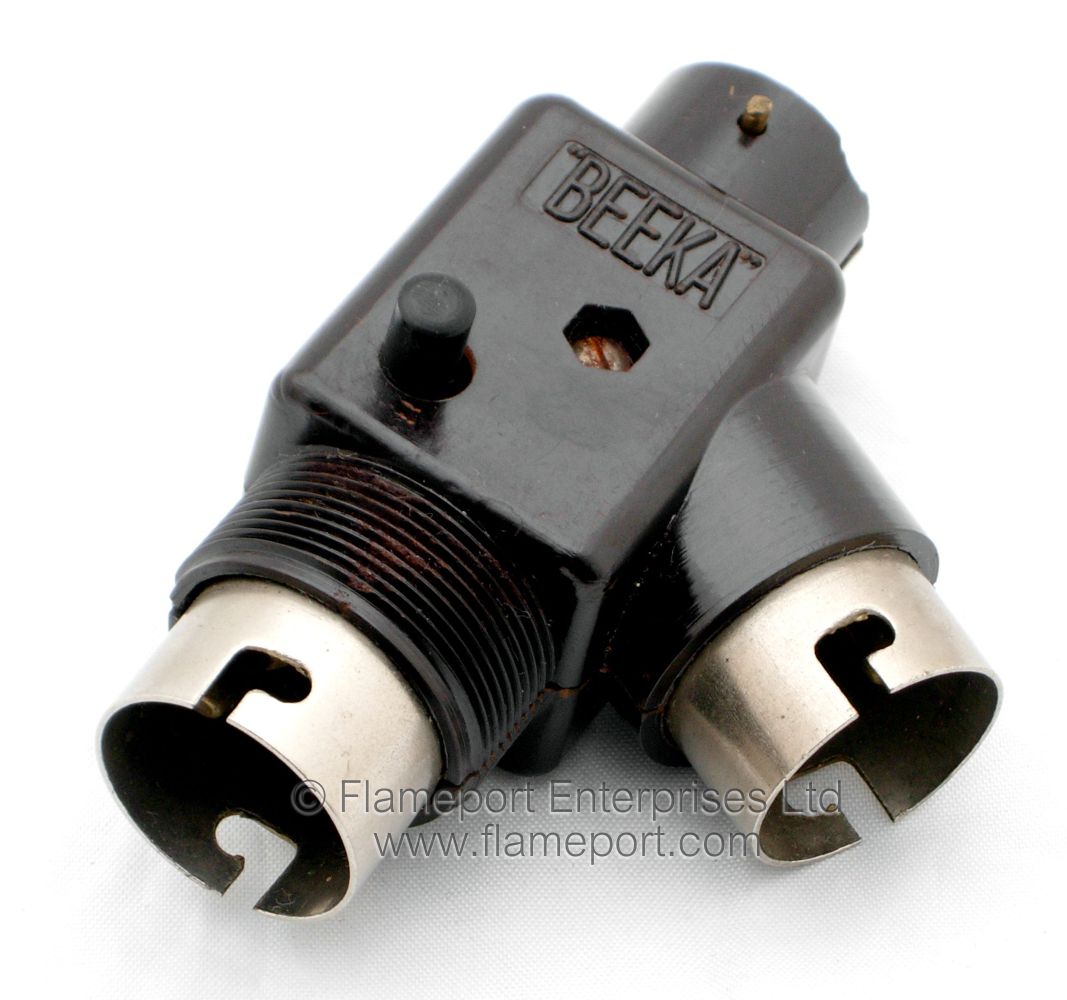I think the idea of using lighting for power goes back to the days when there were separate meters for lighting and power and power was more expensive than lighting electric. It was illegal to use lighting electric for power and people were taken to court but clearly it did not stop people plugging into the lights.
Many homes progressed slowly from candles and oil lamps to gas lamps to electric and lights tended to stay in the same place. So gas lamp was on the wall so you could reach it to light it and when electric came that was also on the wall. Raise and fall lamps to allow lighting were made but a spigot on the wall onto which you placed the lamp was the normally method.
This history tells us the whole unit is called a lamp, the candle, wick, mantel or bulb fitted onto the lamp. Be it a gas tap or a socket often a small piece of wood was fastened to the wall and the socket or switch was then put on the wood.
My grand father's house just pre-war had two 15A sockets, my fathers house 1954 had five 13A sockets, it also still had wall lights in the hall, stairs, and landing. The stairs and landing lights have been replaced but the hall still had the original metal wall lamps with no earths.
The kitchen had a ceiling lamp which my father replaced with a plug in metal fluorescent lamp think it still may be in the garage. When it failed dad fitted a metal lamp to ceiling again fluorescent now a 2D double insulated but that original plug in one clearly could not have been earthed.
When in 2006 the wet room was fitted the electrician employed by builders offered for £100 extra to swap whole consumer unit rather than fit a sub main for wet room. Had the builder done his job I would have not questioned the wiring of the consumer unit. However we had to take over the job and found the house earth was the earth rod fitted by BT for the party line telephone using bare copper around 3mm². There simply was no earth connection to the house. I could not find any signs of an earth connection ever existing. It now has a DNO earth.
Gas was late addition to house so it would seem only earth was the water pipe. Although I could not find any earth bonding so it seems likely there was never an earth since the house was built. However I know there must have been an earth as I remember an earth fault on a radio blowing a 13A fuse. So something at some time must have changed possible when the solid fuel cooker was removed.
The fact I could find no sign, but knew it must have existed, means looking today, clearly we can't really say what was there, even just back to 1954.



